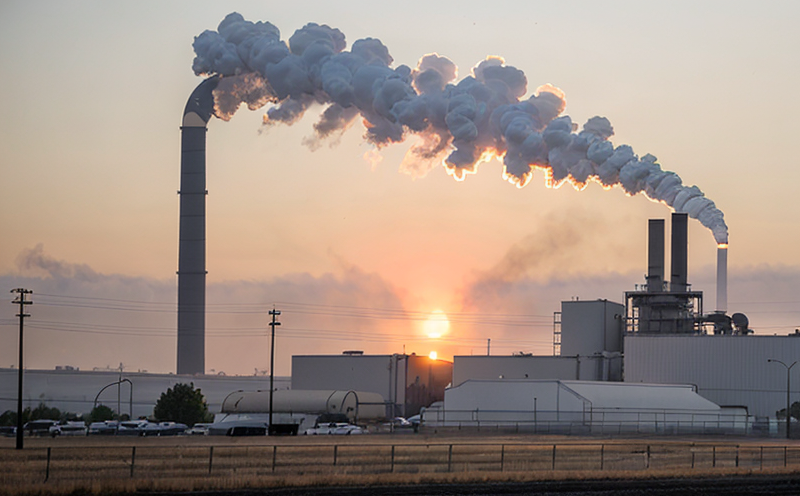JIS B7951 Particulate Matter Testing in Industrial Facilities
The JIS B7951 standard is a critical tool for quality managers and compliance officers within industrial manufacturing facilities. This standard sets out procedures to measure particulate matter (PM) emissions, ensuring that industrial processes comply with stringent environmental regulations.
Particulate Matter (PM), particularly PM2.5 and PM10, can have severe health impacts when released into the atmosphere. Industrial processes often produce these particles as by-products of combustion or other manufacturing activities. Therefore, it is essential for facilities to monitor and control their emissions to avoid non-compliance penalties and environmental damage.
Under JIS B7951, particulate matter testing involves collecting air samples from industrial facilities using appropriate sampling techniques such as the use of high-volume samplers or gravimetric methods. The collected samples are then analyzed for various parameters including mass concentration, particle size distribution, and chemical composition. This analysis helps in identifying potential sources of emissions and assessing the effectiveness of emission control measures.
Accurate particulate matter testing is crucial because it enables industrial facilities to:
- Monitor compliance with local and international environmental regulations.
- Evaluate the performance of air pollution control equipment.
- Identify areas for improvement in emissions reduction strategies.
- Avoid costly fines and reputational damage from non-compliance.
The testing process is governed by JIS B7951, which specifies detailed procedures that must be followed to ensure accurate results. Compliance with this standard is essential not only to meet regulatory requirements but also to maintain a good reputation among customers and stakeholders.
Understanding the importance of particulate matter testing requires knowledge of its effects on human health and the environment. Particulate matter can cause respiratory issues, cardiovascular diseases, and other serious health problems when inhaled. In industrial settings, PM emissions can come from various sources such as combustion processes, material handling, and manufacturing operations.
Industries that rely heavily on combustion or manufacturing processes face a higher risk of particulate matter emissions. By conducting regular testing according to JIS B7951, these facilities can ensure that their emissions are within acceptable limits, thereby protecting both the environment and public health. This testing is also crucial for industries involved in sectors such as metallurgy, chemical processing, and power generation.
Why It Matters
The importance of particulate matter testing cannot be overstated in industrial facilities. Compliance with JIS B7951 ensures that emissions are within acceptable limits, protecting both the environment and public health. This is particularly critical for industries such as metallurgy, chemical processing, and power generation where combustion processes and manufacturing activities can release high levels of particulate matter.
By conducting regular testing according to JIS B7951 standards, industrial facilities demonstrate a commitment to environmental responsibility. This not only helps in avoiding costly fines but also enhances the reputation of the facility among stakeholders. Properly conducted tests provide valuable data that can be used to identify areas for improvement and implement effective emission control measures.
The benefits of particulate matter testing extend beyond compliance with regulations. It allows facilities to optimize their operations, reduce emissions, and improve overall environmental performance. This is especially important in a world where there is increasing pressure on industries to adopt sustainable practices and reduce their carbon footprint.
Benefits
- Compliance with regulations: Ensures adherence to local and international environmental standards.
- Emission control effectiveness: Identifies the performance of air pollution control equipment.
- Operational improvements: Provides data for optimizing processes and reducing emissions.
- Credit with stakeholders: Enhances reputation by demonstrating a commitment to environmental responsibility.
- Avoidance of fines: Reduces the risk of financial penalties for non-compliance.
- Better operational efficiency: Helps in identifying inefficiencies and areas for improvement.
Use Cases and Application Examples
| Industry Sector | Application Example | Testing Frequency |
|---|---|---|
| Metallurgy | Evaluating the impact of smelting processes on air quality. | Quarterly, or more frequently if changes in operations are detected. |
| Chemical Processing | Monitoring emissions from chemical reactors and storage facilities. | Monthly during peak production periods. |
| Petrochemical Industry | Assessing the effectiveness of flue gas desulfurization systems. | Semi-annually, or more frequently if there are operational changes. |
- Metallurgy: Testing in metallurgical facilities is critical to monitor emissions from smelting processes. Regular testing helps identify potential issues early and allows for timely corrective actions.
- Chemical Processing: In chemical processing plants, particulate matter testing is used to ensure that emission control systems are functioning effectively. This testing can be done monthly during peak production periods to maintain consistent air quality standards.
- Petrochemical Industry: Testing in petrochemical facilities focuses on assessing the effectiveness of flue gas desulfurization systems. Semi-annual tests, or more frequent if there are operational changes, help ensure that emissions meet regulatory requirements and contribute to a cleaner environment.





